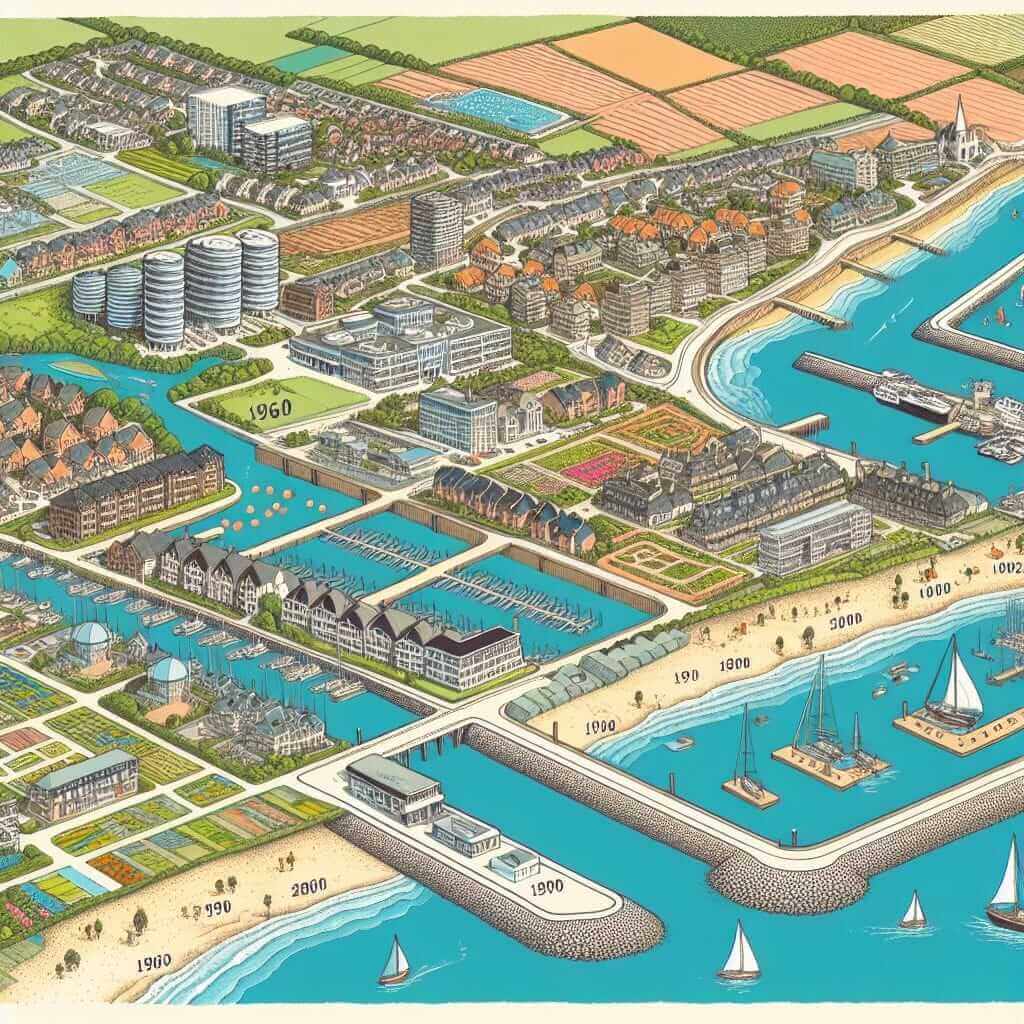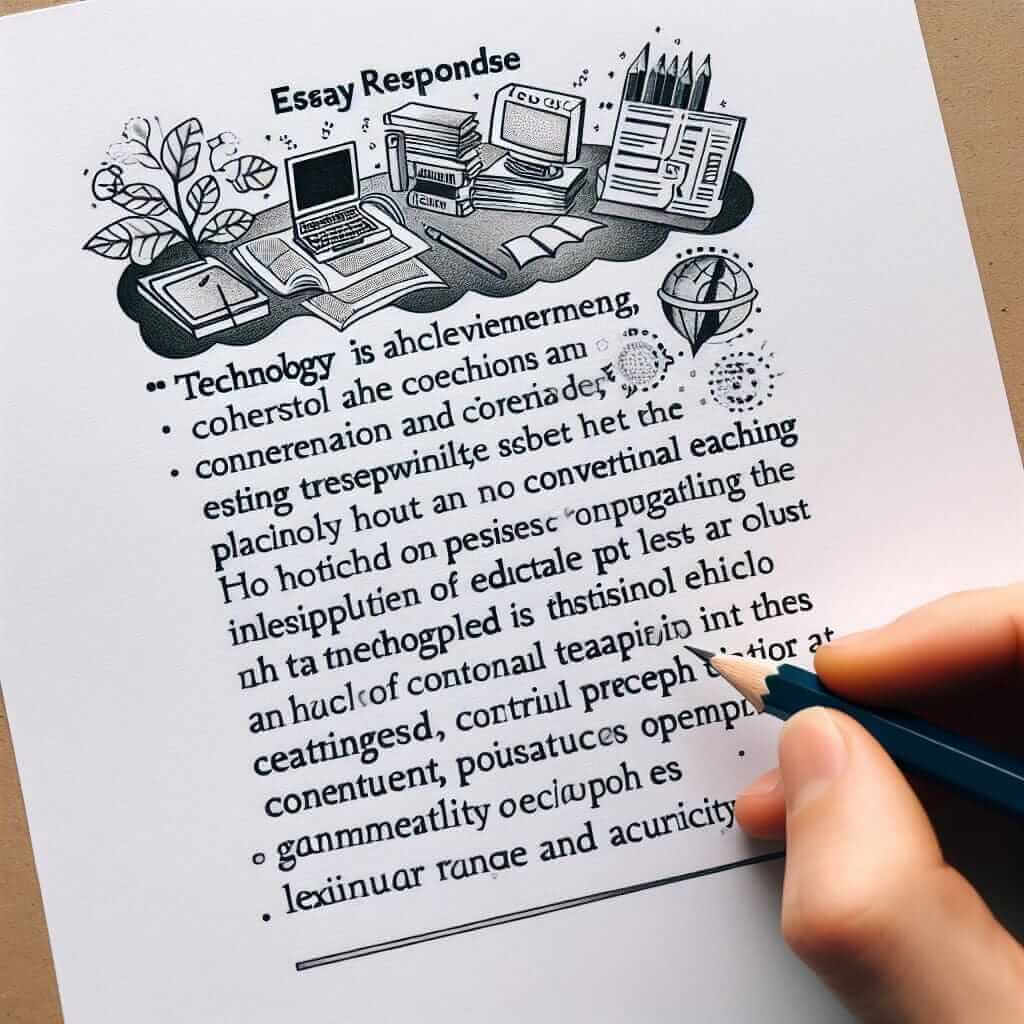Understanding Map Description in IELTS Writing
In the IELTS Writing Task 1 Academic exam, you might be asked to describe a map. This task assesses your ability to:
Nội dung bài viết
- Analyze visual information: Understand the key features and changes presented in the map.
- Use spatial language: Accurately describe locations, directions, and relationships between elements.
- Organize information logically: Present your description in a clear and coherent manner.
- Use a range of vocabulary and grammar: Demonstrate your language proficiency by using varied vocabulary and grammatical structures.
Mastering map description is crucial for achieving a high band score in your IELTS Writing test.
Steps to Describe a Map Effectively
1. Analyze the Map Carefully
Before you start writing, take a few moments to analyze the map thoroughly:
- Identify the type of map: Is it a map showing changes over time or comparing two different locations?
- Determine the key features: What are the main elements shown on the map (e.g., buildings, roads, natural features)?
- Note any significant changes: If the map shows a transformation, identify the major differences between the two time periods or locations.
2. Structure Your Response
A well-organized response is crucial for clarity. Follow this structure:
- Introduction: Paraphrase the question and state the type of map and the time period or locations shown.
- Overview: Summarize the most significant changes or features of the map. This provides the examiner with a clear understanding of the overall trends.
- Body Paragraphs: Divide your description into two or three body paragraphs, each focusing on a specific area or aspect of the map. Use spatial language to guide the reader through the changes or comparisons.
- Conclusion: Briefly summarize the main changes or features, highlighting any significant trends. Avoid introducing new information in the conclusion.
3. Use Precise Vocabulary and Grammar
- Prepositions of Place: Use a variety of prepositions to accurately describe locations (e.g., next to, opposite, adjacent to, in the north-east of).
- Compass Directions: Utilize compass points (north, south, east, west) and their combinations (north-west, south-east) for clear direction indication.
- Verbs of Change: Employ verbs effectively to describe changes (e.g., developed, transformed, expanded, replaced, demolished).
- Comparatives and Superlatives: Use comparative and superlative adjectives to highlight differences (e.g., larger, smaller, the most significant change).
Example from an IELTS Writing Test
The map below shows the development of a seaside town between 1960 and 2000.
 seaside town development map
seaside town development map
Summarize the information by selecting and reporting the main features, and make comparisons where relevant.
Model Answer:
The map illustrates the transformation of a coastal town over a forty-year period, from 1960 to 2000.
Overview: Overall, the town underwent significant development, with the expansion of residential areas, the introduction of new amenities, and the growth of tourism infrastructure.
Body Paragraph 1 (Changes in the North): In 1960, the northern part of the town was primarily rural, with a small fishing harbor and scattered houses. By 2000, the harbor had been expanded to accommodate yachts, reflecting the growth of tourism. Additionally, a new residential area, complete with a shopping center, emerged in the north-west, replacing the farmland that previously occupied the area.
Body Paragraph 2 (Changes in the South): The southern part of the town experienced equally dramatic changes. The original hotel was demolished and replaced by a larger resort complex, indicating the town’s increasing popularity as a tourist destination. Furthermore, the construction of a new golf course and tennis courts further enhanced the town’s recreational facilities.
Conclusion: In conclusion, the seaside town witnessed substantial modernization and expansion between 1960 and 2000, driven by the growth of tourism and the demand for residential areas.
Tips for Success:
- Practice Regularly: Familiarize yourself with different map types and practice describing them using appropriate vocabulary and grammar.
- Time Management: Allocate your time wisely in the exam, ensuring you have sufficient time to analyze the map, plan your response, and write clearly.
- Proofread Carefully: Reserve a few minutes to review your work for any grammatical or spelling errors.
By following these tips and practicing regularly, you can enhance your map description skills and improve your performance in the IELTS Writing Task 1.


